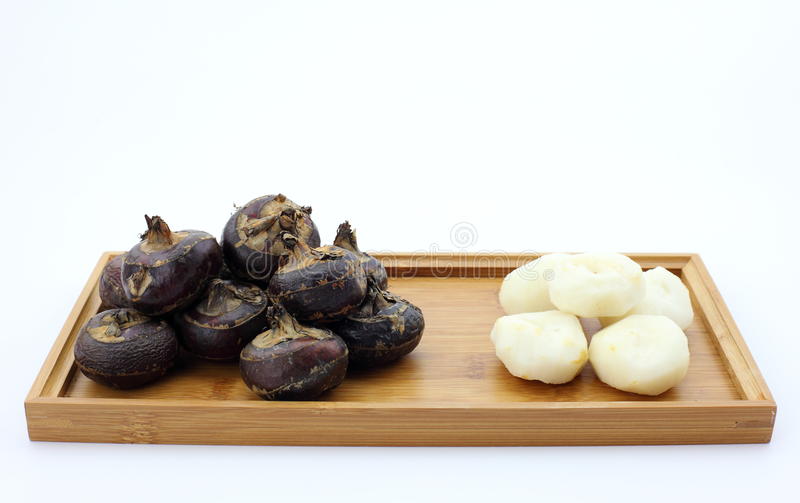Most people are accustomed to using canned water chestnuts, which have a nice crunchy texture but lack flavor or, worse, have a tinny taste. Fresh water chestnuts are sweet, mild, and crisp. To use, peel off the dark brown outer shell to reveal the sweet white meat. If the interior looks yellow, discard the water chestnut, as it is a sign it is past its prime. If you can’t find fresh water chestnuts, jicama makes a good substitute.
Look for firm water chestnuts with a dark brown exterior; avoid chestnuts that are soft or have moldy spots.
An ingredient with a very unusual, utterly reliable crunch and light sweetness. They are not chestnuts or nuts but the corms of an aquatic vegetable that is native throughout Asia, Africa, Australia and Pacific Islands. The texture and flavour is closely related to that of lotus root. The corms can be made into a flour for a steamed cake familiar to habitués of dim sum restaurants.

Water chestnuts can be eaten raw but this is not advisable as some might come with disease from the water in which they grew.
Availability
Most easily found canned in Asian supermarkets.

Choose the best
Nothing should be added, and water chestnuts canned in water or brine will be more useful than those in vinegar.
Store it
Once opened, treat like other cooked vegetables, keeping them chilled and covered, for up to a week.
Cook it
The great appeal of the water chestnut is its magical ability to stay crisp no matter how long it is cooked. So, sliced, grated, or cubed, it is a totally reliable addition for texture to almost anything, ideally of an Asian bent. You might add tiny cubes to mashed garlic and parsley potatoes, to the stuffing of roast chicken or duck; thin slices make welcome additions in dishes like green beans with a touch of sweet chilli sauce.

